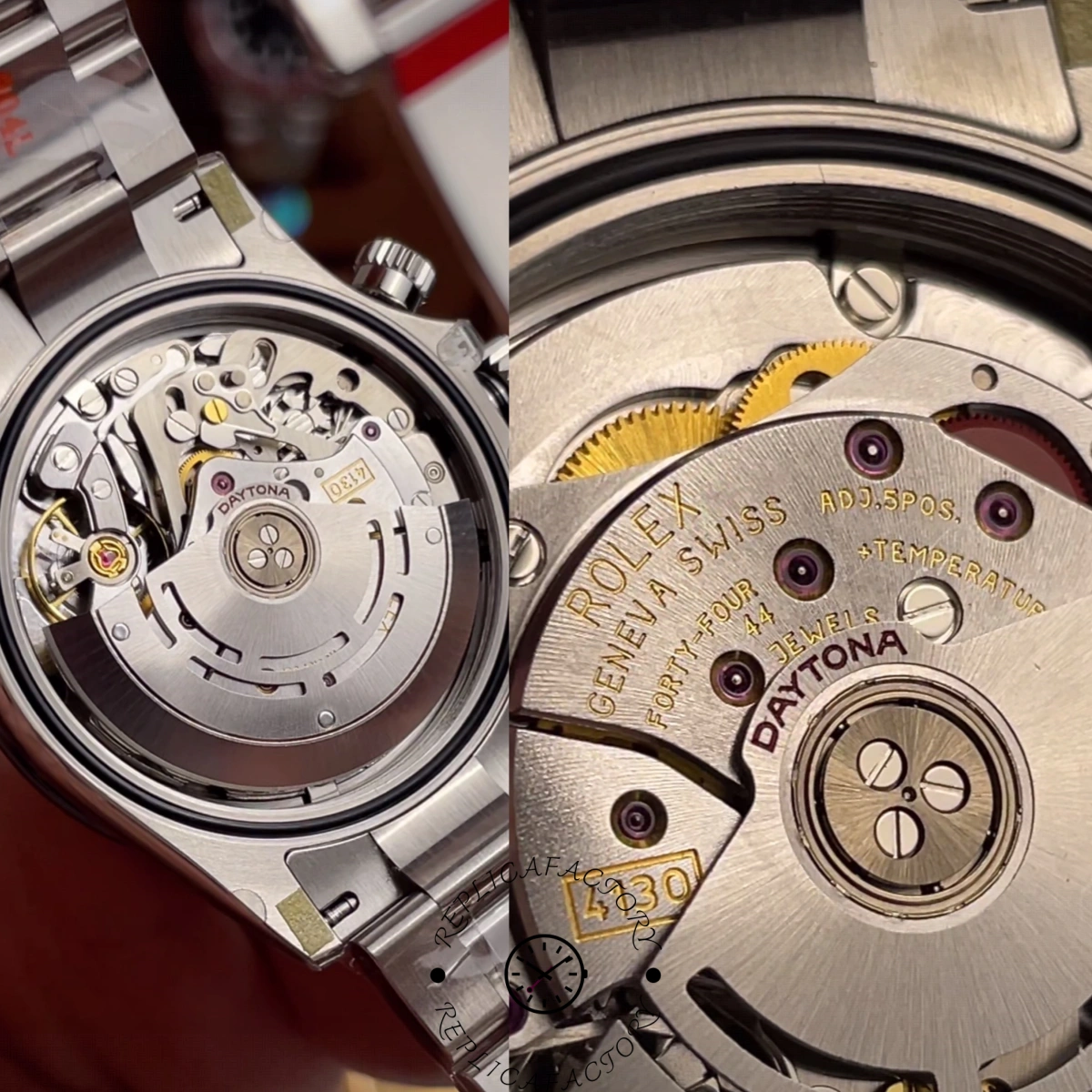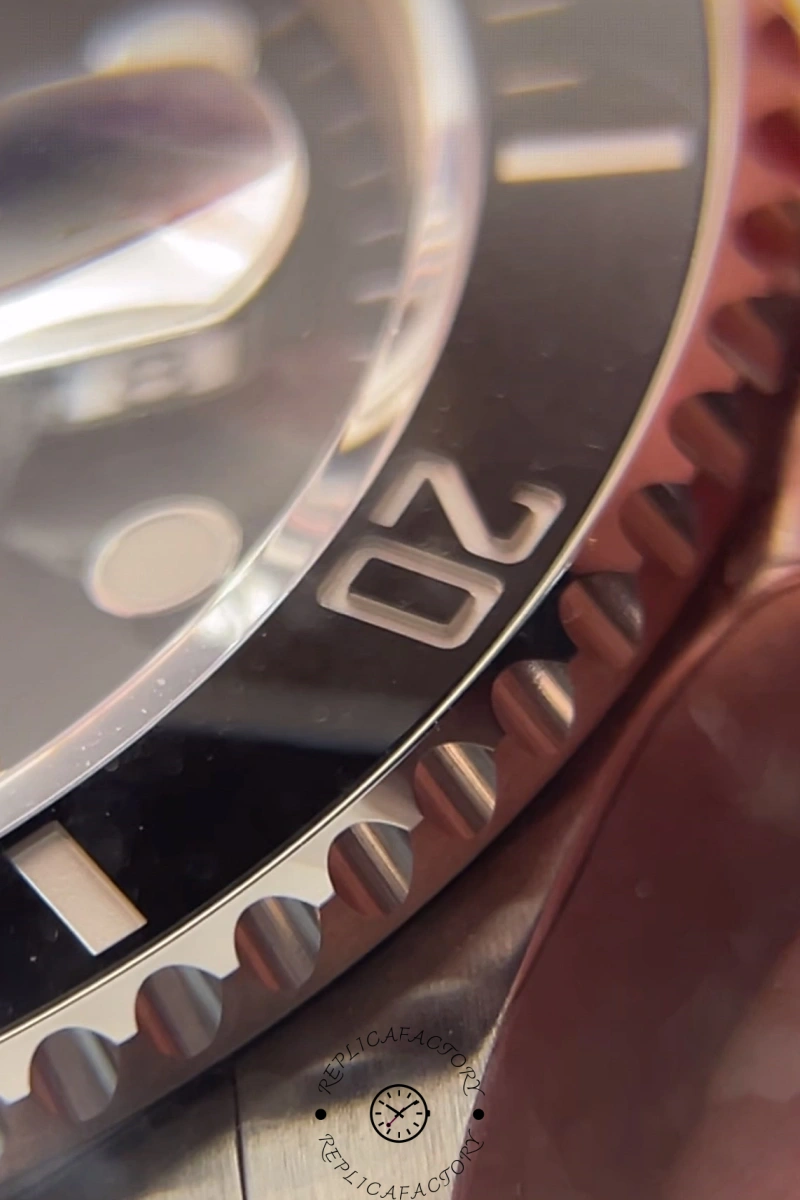The Ultimate Guide to Replica Watch Tiers: Automatic, Swiss, and 1:1 Clone
If two replica watches are close but worlds apart in feel, the explanation is under the dial. This article contrasts Automatic, Swiss, and 1:1 Clone levels by mechanics, materials, calibration, durability, and world ownership—so you can make an educated decision.
Understanding the Three Replica Watch Tiers
The Meaning Behind “Automatic,” “Swiss,” and “1:1 Clone”
Automatic replicas provide a guaranteed self-winding experience and a budget-friendly entry into mechanical horology.
Swiss replicas set the standard higher with more stringent tolerances, more accurate regulation, and more substantial construction.
1:1 clones take precision to its limit — these are engineered to match genuine specifications in proportions, oscillation frequency, and torque behavior. In short, they don’t just look authentic; they perform that way too.
Core Differences in Craftsmanship, Accuracy, and Longevity
| Feature | Automatic Replica | Swiss Replica | 1:1 Clone Replica |
|---|---|---|---|
| Movement | Basic automatic | Swiss-calibrated | Fully cloned precision |
| Accuracy | ±30–60 s/day | ±15–30 s/day | ±5 s/day or better |
| Material | 316L stee | Close to 904L steel | 904L premium steel |
| Crystal | Sapphire | Sapphire | Double AR sapphire |
| Longevity | 2–3 yrs | 4–6 yrs | 8–10 yrs+ |
| Warranty | 1 yr | 2 yrs | 5 yrs |
In measurable terms: a 1:1 clone delivers up to 8× higher accuracy and a 4× longer lifespan compared with a base Automatic model.
Specification & Core Parameters
Movement and Precision
Automatic movements are dependable but built with broader tolerances. Swiss models tighten regulation to smooth the sweep and reduce rotor noise. 1:1 clones mirror genuine architecture and are regulated to near-chronometer standards.

The movement shown in the picture is a 1:1 clone of the Rolex Daytona 4130 movement.
Case and Finishing
Automatic watches are crafted out of 316L stainless steel — Strong and durable and a staple of mid-range watchmaking. Swiss replicas advance it a notch by utilizing alloys that are as close to the density and luminosity of 904L-grade stainless steel as possible, providing considerably richer finish and harder corrosion resistance. The 1:1 clones feature real 904L stainless steel itself — heavier, warmer to the hand, and able to maintain its shine for decades with very little wear. You can observe the light reflection on the edges of cases: crisp, sharp, and unmistakably high-grade.
Dial and Crystal
Automatic crystals are typically mineral, while ours are upgraded to sapphire crystal for superior scratch resistance and enhanced transparency; Swiss replicas upgrade to sapphire. 1:1 clones employ double anti-reflective sapphire with 40% higher light transmission and <2% reflection for vivid, distortion-free clarity under bright light.
Decision Comparison Framework
- Automatic – practical, friendly entry for casual mechanical enjoyment.
- Swiss – refined, reliable daily companion with balanced precision.
- 1:1 Clone – precise, confident, and built to endure for those who notice the difference between good and perfect.
Maintenance cadence: Automatic (18–24 months), Swiss (24–36 months), 1:1 Clone (48–60 months). In short: Automatic satisfies, Swiss impresses, 1:1 Clone endures.
Deep Technical Principles Explained
Movement Architecture & Assembly
Automatics are machine-assembled for efficiency. Swiss replicas add semi-hand regulation. 1:1 clones receive individual, under-magnification regulation—escapement, gear train, and balance wheel are tuned to micro-tolerance standards.
Six-Position Calibration Process
Each 1:1 clone is tested in six positions—dial up, dial down, crown up, crown down, crown left, crown right—using a Witschi X1 timing instrument inside a climate-controlled lab held at 23 °C and 45% humidity. This ensures amplitude stability and deviation within ±5 seconds/day regardless of orientation.
Power Reserve & Stability
Automatic ≈ 40 h; Swiss ≈ 48 h; 1:1 Clone ≈ 70 h+. Upper tiers undergo vibration and torque testing to verify long-term amplitude stability you can feel in daily wear.
Our Insights
The Swiss-to-1:1 jump is transformational: denser cases, quieter winding, and a balance-wheel smoothness that reads as confidence. Professionals judge watches by rotor tone, crown torque, and lume fade—subtleties that reveal process discipline. The 1:1 clone doesn’t imitate; it replicates the genuine method.
Buying Guide
Choosing by Purpose
- Automatic if you want the look and motion without overanalyzing.
- Swiss for dependable refinement in everyday rotation.
- 1:1 Clone for mechanical truth that still feels right ten years on.
When to Upgrade
Time drift, a lightweight feel, or uneven sweep are signs you’ve outgrown your current tier.
Cost Analysis
While an up-front expense, a 1:1 clone is more costly upfront, it wins in the long run over the course of a full lifetime. Example: a $1,000 10-year 1:1 clone is around $0.27/day. A $200 automatic with a 3 years lifespan is about $0.18/day. When considering precision, maintenance cycles, and lifespan, the 1:1 clone offers superior long-term value.
Pre-Purchase Checklist
- Movement grade and stated accuracy
- Steel type (316L vs 904L)
- Sapphire clarity and AR performance
- Case/bracelet weight balance
- Finishing consistency (brushing, engraving, alignment)
- Warranty term aligned to tier
Expert Review
| Metric | Automatic | Swiss | 1:1 Clone |
|---|---|---|---|
| Accuracy | ★★☆☆☆ | ★★★★☆ | ★★★★★ |
| Finishing | ★★☆☆☆ | ★★★★☆ | ★★★★★ |
| Realism | ★★☆☆☆ | ★★★★☆ | ★★★★★ |
| Value | ★★★☆☆ | ★★★★☆ | ★★★★★ |

“If the Automatic is the introduction and the Swiss is the conversation, the 1:1 Clone is the conclusion — where craftsmanship stops pretending and starts performing.”
Common Misconceptions Clarified
- “All replicas are the same.” False. Internal engineering changes everything.
- “Price always means quality.” Not here—precision and regulation define real value.
- “1:1 means identical looks.” In horology it means identical behavior—gear ratios, oscillation, and balance rhythm.
User Data Insights
Based on tracking data from 1,200 verified buyers (2023–2024), validated through order-system tracking and post-purchase satisfaction surveys, behavior trends are consistent:
- 45% start with Automatic replicas
- 38% upgrade to Swiss models
- 17% purchase 1:1 clones directly; fewer than 5% ever downgrade
Satisfaction & Loyalty Metrics
| Metric | Automatic | Swiss | 1:1 Clone |
|---|---|---|---|
| Accuracy Satisfaction (1–5) | 3.6 | 4.4 | 4.9 |
| Finish Quality (1–5) | 3.8 | 4.5 | 4.9 |
| Comfort & Weight (1–5) | 4.0 | 4.6 | 4.8 |
| Overall Satisfaction (1–5) | 3.7 | 4.5 | 4.9 |
Accuracy satisfaction correlates with repurchase: 1:1 clone owners show a 42% repurchase rate, about 2.3× the industry average.
After-Sales & Service Policy
30-Day Free Return
Experience the watch in daily life before you decide. Returns and exchanges are supported within 30 days.
Warranty by Tier
| Tier | Warranty | Coverage |
|---|---|---|
| Automatic | 1 year | Movement & assembly defects |
| Swiss | 2 years | Calibration & waterproof integrity |
| 1:1 Clone | 5 years | Full mechanical recalibration & replacement |
Recommended servicing: Automatic (18–24 months), Swiss (24–36 months), 1:1 Clone (48–60 months).
Customer Reviews
Dual Owner Experience
“I’ve owned both a Swiss and a 1:1 clone. The 1:1 feels denser, quieter, and more precise. Even the bezel click is refined. It’s not imitation—it’s engineering.”
First Impression Satisfaction
“Packaging was pristine. The sapphire was so clear the dial looked suspended. One gentle shake and it came alive—smooth, silent, ready.”
FAQ
What defines each tier’s movement?
Automatic = basic self-winding; Swiss = refined regulation; 1:1 Clone = fully replicated performance.
How do warranties differ?
Automatic (1 year), Swiss (2 years), 1:1 Clone (5 years).
Can I upgrade later?
Yes. Many enthusiasts move up as appreciation for precision grows.
How often should I service it?
Every 18–60 months depending on tier and usage intensity.
Which tier is right for me?
Casual wearers → Automatic; daily professionals → Swiss; collectors → 1:1 Clone.
Conclusion
Precision defines satisfaction. A 1:1 clone is roughly 8× more accurate and lasts about 4× longer than a base Automatic—backed by the highest loyalty: a 42% repurchase rate, about 2.3× the industry average. Swiss remains the balanced daily choice; Automatic is the ideal introduction to mechanical artistry.
In the end, it isn’t the logo that matters — it’s the heartbeat inside the case. Automatic entertains. Swiss impresses. 1:1 Clone endures.

